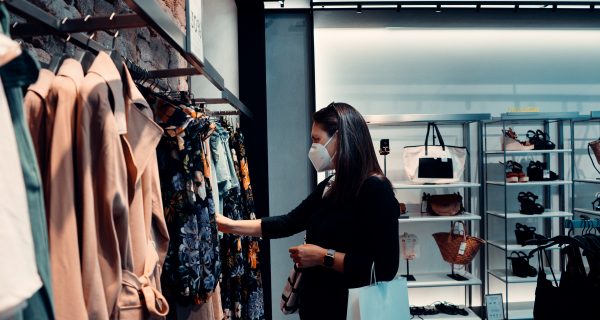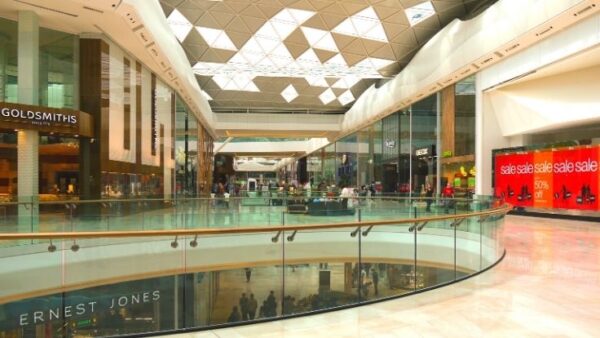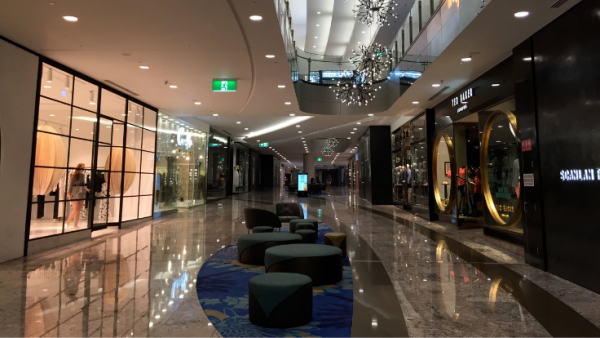Although the world is attempting to return to a sort of normality, it is obvious that certain aspects might have irrevocably changed. The business world is no exception, so what’s the new standard for business?
The Covid pandemic is one of only a few times in history, before and after. When all can be set as ‘before Covid’ or ‘after Covid’ in context.
Physical retail around the world was forcefully modified during the lockout and customer behaviour adapted accordingly. Retailers that start up again work in a different environment.
We recently wrote a piece about how to safely run a store in a post-covid world (check it out here), so we’re going to talk about some of the longer-term impacts in this article and what distributors need to be mindful of in order to thrive.
Physical vs digital a thing of the past
A number of brick-and – mortar stores were suffering long before the pandemic. There are various and nuanced explanations for this, but it is fair to assume that much of it is responsible for the rise and growth of e-commerce.
Related Post: Eleven things to consider when planning to open a store in a post-COVID world
Consumer behaviour was forcefully adjusted during the lockout. All had to turn to the digital world for their retail needs with physical stores closed, including sectors and consumer groups that previously opposed doing so. Now that these barriers have been demolished, things are unlikely to return to the way they were before. Out of the bottle is the genie.
What this means is that the relationship between offline and online is more critical than ever. Brands that are unable to combine the two will fight. Physical retail remains a very strong customer engagement tool, and the digital world can never compete with the value and experience that can be offered by a physical store.

This ‘phygital’ so-called solution is far from a modern notion. This process, however, will be an ongoing evolution, not a single transition. Are we going to see the virtual wardrobe that Cher Horowitz uses in Clueless to pick what to wear? What about runway shows with holographics? No idea, but those that succeed will be the brands who make the largest leaps and seamlessly merge both the physical and the digital to optimise the effect of each one.
Coping with a recession
It is no secret that the world is facing a possible recession of great severity. However, unlike previous recessions (2008, 1990s etc.), a sudden shutdown of consumer spending caused the Covid recession. Clear, obvious and instantaneous. Previous recessions have left durable imbalances that have taken years to sort out. Although many economists believe we can rebound rapidly, the fact that we’re in for a tough time is not secret.
Related Post: Will physical retail have a role to play in a Post-COVID world?
How will shopping affect this? Well, to begin with , people are going to have less money and be less likely to invest what they have. This decreased spending on consumers would hit retail hard. Retailers will have to fight to build confidence and loyalty by providing outstanding experiences and being trustworthy, much as in previous lean times.
History tells us that recessions reveal internal vulnerabilities, speed up new patterns, and push companies to make quicker than initially expected systemic changes. Brands who adapt, alter their activities and focus on providing value to their customers will emerge at the top, and those that are earliest to do so will have a great chance to develop themselves.
Contactless shopping the new norm?
Contactless shopping refers to the idea of not actually selling something in your stores, another trend that will definitely become popular in the future. A shopping experience without touching items, no show replenishment, and no need for enormous customer numbers. In exhibits, goods are displayed and sales are either made there and there and generated from the back or delivered the next day directly to your home.
Although this is a style that has evolved due to the short-term limitations of working in a Covid environment, consumers are highly likely to tolerate it at first and then actually prefer it.

Appointment-only shopping?
With a range of design labels and fashion companies, we are already seeing this and it’s a trend that might hang around until Covid becomes a bad memory. In short,’ appointment only’ is when you book an appointment on your own or with a small number of other clients and get a time slot in the shop.
While this is very much about preserving social distancing protocols in the short term and making the consumer feel comfortable, it can persist in the long term as it offers a range of significant advantages. From the point of view of the retailer, consumers are more likely to make transactions on an appointment and thus encourage brands to concentrate more of their time and resources on their most important customers who have already made a commitment. An appointment is a far more customised experience from the customer’s point of view; everybody gets a personal shopper!
Related Post: Shop on wheels finally takes off in India as brands arrive at societies with retail trucks
Experiential retail the differentiator
So far, if there is a common theme, the customer experience is and will continue to be relevant. Physical retail offers brands with opportunities to connect with consumers in ways that the internet does not. With consumers buying all sorts of products online becoming more and more relaxed, physical retail needs to wow and delight. People are looking to be amused, and to establish new connexions with consumers and build loyalty, brands must step up to the challenge.
As physical retail changes from transactional to dramatic, experiential retail would be the norm.
Related Post: Age of Experiences is here: What is Experiential Marketing?
Flexible retail – fewer flagships, more theatre?
The Covid crisis served as a trigger, as we have seen, triggering many of the developments we have already seen. Phygital, contactless, experiential … these are all words that we have spoken of for years. There is nothing that is radically different and nothing that can surprise anyone excessively. But it is possible to get a glimpse of what the overall retail picture would look like when you take a step back and look at the bigger picture. This is a new standard.
Will the make-up of the high street and shopping centres look the same if a physical place is all about collecting marketing insight, evaluating new goods and interacting with new and existing customers?
When contemplating their physical retail plan, brands need versatility. We have called this ‘short-term retail’ in the past, everything from six-month pop-ups to one-day activities, but now this tactic is going to be even more common. We’re talking about ‘flexible shopping’ now, the blurring between long-term and short-term tracks.
Expect brands to scale back their flagship stores and create versatile, engaging short-term retail ventures that travel around and grow instead. Positioning their physical retail plans, both completely aligned with and powering ecommerce products, alongside their marketing programmes.
A thing of the past is long-term rentals. Pre-Covid, as brands sought to reduce their risk, we were already seeing a major shift from 5-10 year leases to shorter-term more flexible agreements, but now with an even greater need for flexibility, we expect the pendulum to swing further because more and more brands are seeking flexible terms.
With major retailers struggling and in the middle of a recession, if they want to continue filling their properties with products that attract customers and prove lucrative, landlords will need to reassess their choices and approaches.
Myrsa is a platform where you can find acces to the societies that are close to you and are looking for bulk deliveries.
You can book a different types space through them on a hourly or a daily basis. As this is going to stay for a while you must register on Myrsa now and connect with housing societies even after lockdown. This has now become a lifestyle change and you as a brand must keep up to it!


















